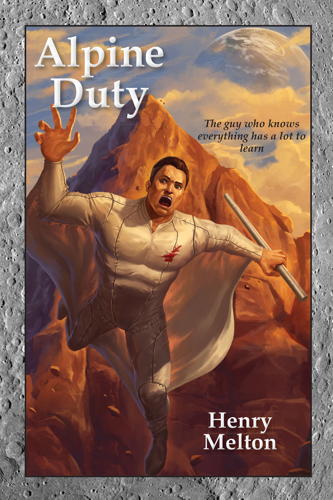Just released is Alpine Destiny, the third and final book of this trilogy. Taking place roughly 500 years after the events in the book Humanicide, the setting is terraformed Luna. But this is a very different place from the gray sterile moon in our sky. Yes, the gravity is still only 1/6th that of Earth, but the terraforming process has given it an atmosphere that is very deep, about a 1000 kilometers thick, purely so that the partial pressure of oxygen is breathable at the surface. But of course, no one could live on a world with a one-month day, so the powerful tractor beam projectors used by the Terraforming Project had been spinning the new world up to a usable day. Unfortunately, the Plague stopped all that and Luna was stuck at a 48 hour day.
The long day and the deep atmosphere produced a side effect the terraforming engineers had not predicted—fierce winds at sunrise and sunset. When life took hold of the new world and green forests sprang up, the remnants of the population in the heavily damaged space cities (the Lagrangian habitats), came to settle on Luna. The winds forced them to settle inside the protective walls of the craters.
The main character is Charles Fasail, born an Alpine, a scholar of a race of scholars. They had settled on Alp Island in the Frigid Sea, hoping to bring back literacy to a world that was stuck at an early Iron Age technology—until the whole colony was destroyed in a massive explosion.
Alpine Duty, book one, tells of Charles’s travels on the forested world of Luna, searching for his identity in a world where he doesn’t fit.
The High Quest, book two, is the expedition to retrieve books from the fabled Library of Alexandria (the new one in space) to bring printed books back to Luna.
Alpine Destiny, book three, details the upheaval as multiple factions try to either destroy Charles and his Ship, or to steal it for themselves, forcing Charles to face his true identity and his purpose in the world.


